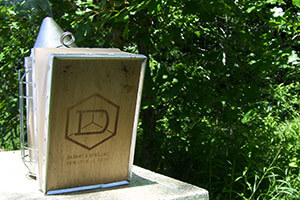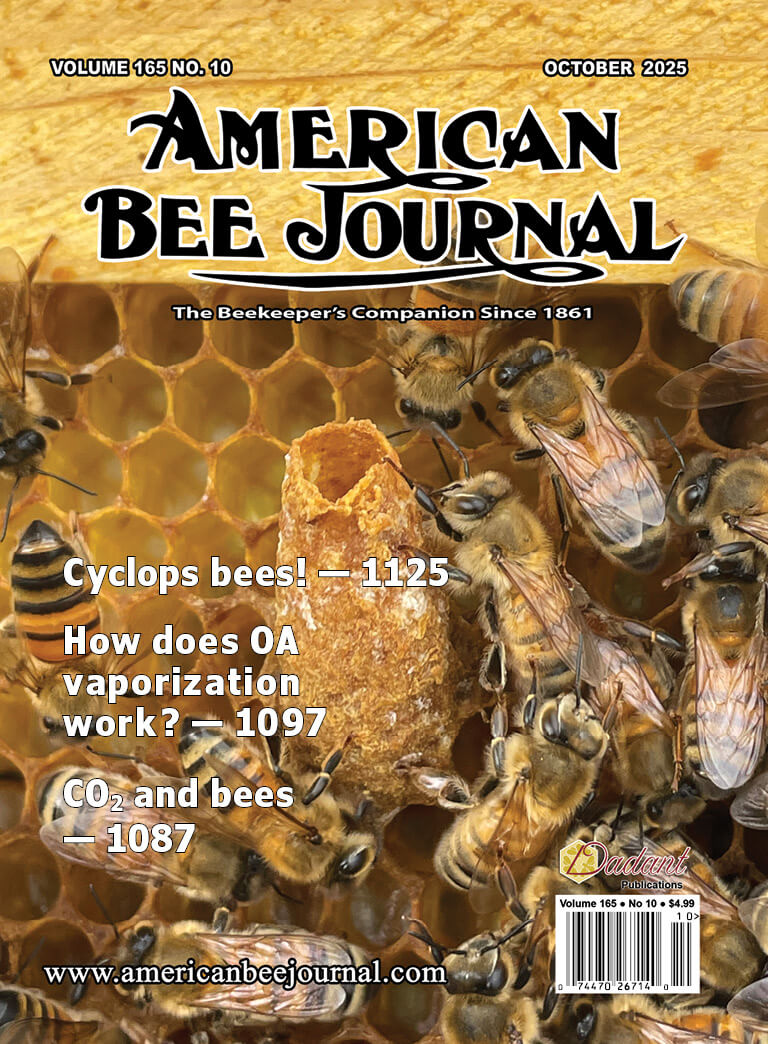Honey Bee Biology
Thermal Beekeeping: Look Inside a Burning Bee Smoker

Before the bee smoker, beekeepers tried various devices to gain control over the bees while checking the status of the colony. Figure 1 shows an example, and also the hardship beekeepers once endured, with uncontrolled smoke. This large smudge pot hung on the windward side of the hive at top-bar level. The smoke would waft over the bees, when capricious breezes caused the device to work. But of course, we know hot smoke and ash would go everywhere like a campfire hooked to a hive–hence the hardship.
Then for smoker contraptions, the awkward world as beekeepers knew it suddenly terminated in the pivotal watershed year of 1873, and the modern world, more efficient, began to emerge. Moses Quinby invented a practical bee smoker. He gave it unpatented to the beekeeping world. His innovation wheeled forward the modern smoker design seen today, that is, when used correctly (Figure 2).
Usually only a few puffs of smoke can control the bees, moving them from getting crushed between supers, stopping them from stinging, and preventing them from inciting other bees to join in. The tendency is that beekeepers use too much smoke. Using a smoker goes hand-in-hand with observing the bees. As I inspect a colony, I am watching and listening to the bees, alert to the initial stages before they mount a defense. As I conduct the inspection, I watch for the places on the top bars where the bees are showing alert and defensive postures ready to launch. I disrupt that with a puff of smoke, not a big blast, and not injecting the hot vapors down between the top bars.
This smoke application is more like surgically placed puffs. If the bees start flying off the top bars without a noticeable provocation, the bees have gotten ahead of the beekeeper. Now the beekeeper needs more smoke to regain control over them, much more than a couple of small initial puffs. If that keeps recurring, it might look like using too much smoke. The needed skill could be more bee watching (or it could be other things too like very defensive bees). Or if while looking through the hive one drops a frame, accidentally knocking off the bees, making them mad, a bee smoker can disrupt their alarm pheromones that would cause a positive feedback to storm up a hail of stinging. A spray bottle, which some use instead of a smoker, cannot stop that coming wave of stinging, especially the bees in the air.
I always light my bee smoker even for the simplest operation, like hiving a spring swarm, even if other beekeepers chide me that the smoker is unnecessary. Why? Well I have kept bees for nearly 50 years in numerous situations. I have seen a lot to put it mildly.
Here is an example. Hiving a spring swarm before a curious crowd gives a beekeeper, particularly a newer one, a feeling of being the expert. In the public eye, one’s knowledge about swarms should be deep and precautions taken better be plenty, or fame could be one’s infamous reward. In that situation, besides lighting my smoker, before I manipulate the swarm, I observe the bees individually to make sure the cluster is not a dry swarm. A dry swarm occurs rarely, but the normally gentle swarm turns very aggressive when disturbed.
Not all dry-swarm biology is understood, but …


